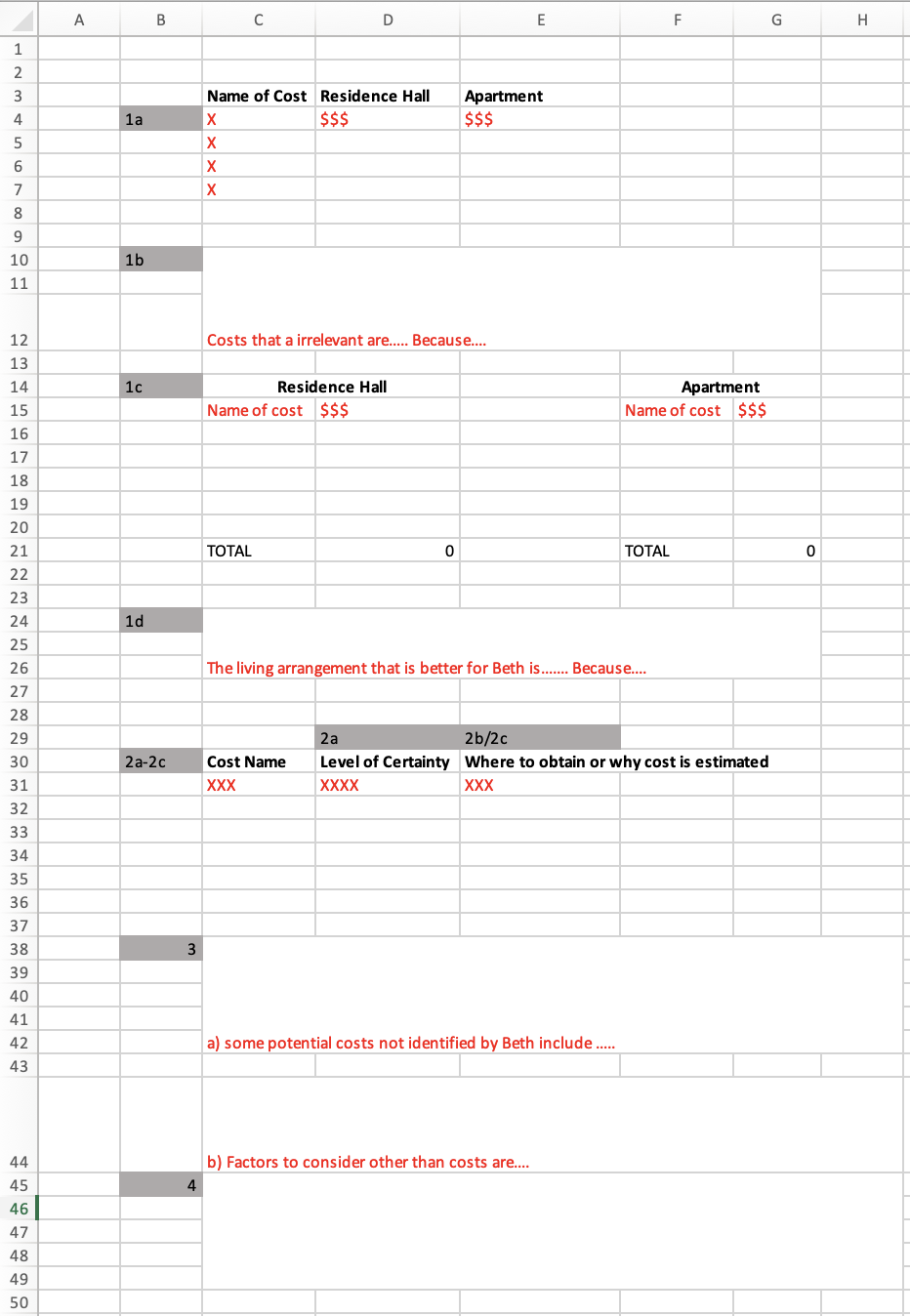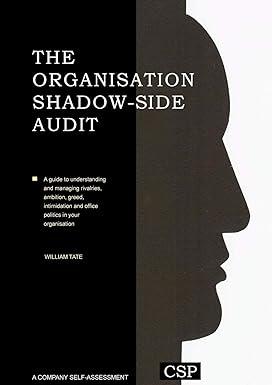Question
Scenario: Beth Pearson is deciding where to live during her second year in college. During her first year, she lived in the residence hall. Recently
Scenario:
Beth Pearson is deciding where to live during her second year in college. During her first year, she lived in the residence hall. Recently her friend Rachel asked her to share an off-campus apartment for the upcoming school year. Beth likes the idea of living in an apartment, but she is concerned about how much it will cost.
To help her decide what to do, Beth collected information about costs. She would pay $400 per month in rent. The minimum lease term on the apartment is six months. Each semester is 4 months, with a 1-month break. Beth estimates that her share of the utility bills will be $75 per month. She also estimates that groceries will cost $200 per month. Beth spent $350 on a new couch over the summer. If she lives in the residence hall, she will put the couch in storage at a cost of $35 per month. Beth expects to spend $7,500 on tuition and $450 on books each semester. Room and board at the residence hall would cost Beth $2900 per semester (four months). This amount includes a food plan of 20 meals per week which is nonrefundable if the meals are not eaten.
Directions: Suppose Beth asks for your advice. Ultimately you should come to a well-supported recommendation detailing your reasons.
1. Use ONLY the cost information collected by Beth for the following tasks:
1a. List all the costs for each option. Note that you may need to list some costs under both options
1b. Review your lists and cross out the costs that are irrelevant to Janets decision and explain why they are irrelevant.
1c. Calculate and compare the total relevant costs of each option
1d. Given the cost comparison, which living arrangement is the better choice for Beth? Explain.
2. Identify uncertainties about the costs collected by Beth.
2a. Determine whether each cost is likely to be (i) known for sure, (ii) estimated with little uncertainty, or (iii) estimated with moderate or high uncertainty
2b. For each cost that is known for sure, explain where Beth would obtain the information.
2c. For each cost that must be estimated, explain why the cost cannot be known for certain.
3. List additional information that might be relevant to Beths decision (list as many items as you can)
3a. Costs not identified by Beth
3b. Factors (including uncertainties) other than costs
4. Explain why conducting a cost comparison is useful to Beth, even if factors other than costs are important to her decision.
Step by Step Solution
There are 3 Steps involved in it
Step: 1

Get Instant Access to Expert-Tailored Solutions
See step-by-step solutions with expert insights and AI powered tools for academic success
Step: 2

Step: 3

Ace Your Homework with AI
Get the answers you need in no time with our AI-driven, step-by-step assistance
Get Started


